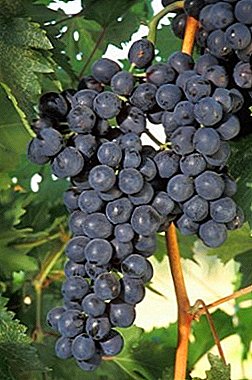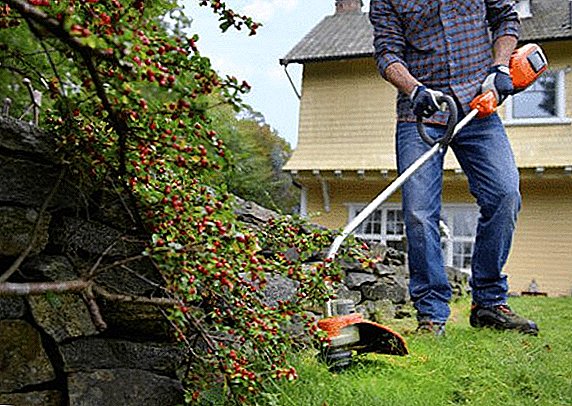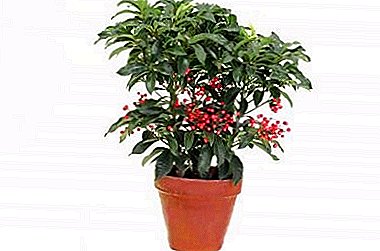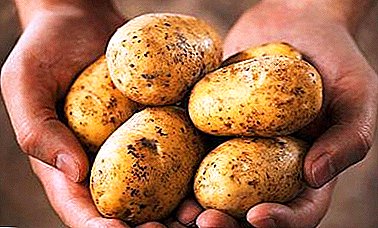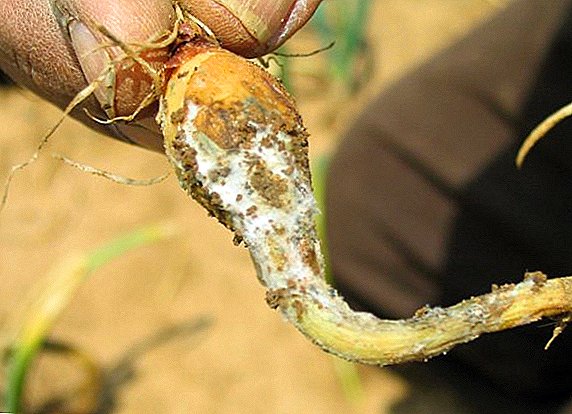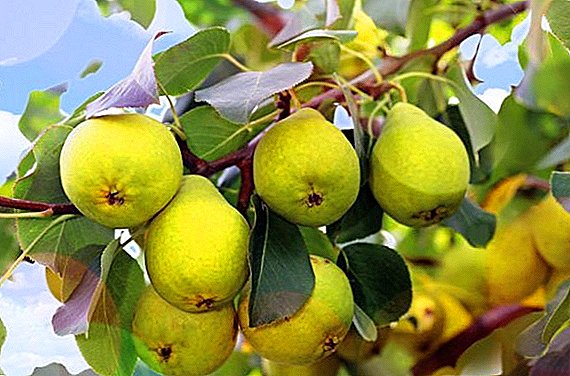 Pear "Uralochka" is a late variety that perfectly tolerates even severe frosts and is distinguished by good yield and early growth.
Pear "Uralochka" is a late variety that perfectly tolerates even severe frosts and is distinguished by good yield and early growth.
In this article we will touch on the description of the variety, understand the features of care, key advantages and disadvantages.
Breeding history and breeding region
Variety "Uralochka" bred in the Chelyabinsk region by crossing the "Ussuri pear" and "Northerners". Breeding was carried out in 1967 by specialists of the South Ural Research Institute.  They worked specifically to develop a robust variety for regions with a harsh climate, where most of these plants find it difficult to settle down.
They worked specifically to develop a robust variety for regions with a harsh climate, where most of these plants find it difficult to settle down.
It is zoned within the Urals and Western Siberia, is less common in the Far East. "Uralochka" is grown for industrial purposes, is also in demand among gardeners.
Tree description
Variety is considered to be medium. The tree can grow to a height of 5 meters. The branches deviate at an angle, most often straight and sparse, their ends are directed upwards. The bark of the tree on the trunk, as well as on the branches, is smooth, with a grayish color.
Learn more about such varieties of pears as "Kure", "Williams Summer", "Noyabrskaya", "Zaveya", "Allegro", "Faithful", "Williams Red", "Perun", "Rainbow", "Larinskaya" , "Permyachka", "Dukhmyanaya", "Belarusian Late", "Tenderness", "Petrovskaya", "Otradnenskaya", "Avgustovskaya dew", "Children's".
Fruit Description
The fruits of Uralochka are relatively small, their average weight reaches 44 g. They have a regular pear-shaped shape, somewhat rough to the touch. The skin can be described as medium, dull, characterized by roughness.  During the period of removable maturity they have a greenish-yellow tint, while after maturation it acquires a golden color. The stem is thin and curved, the seed pods of this variety are closed.
During the period of removable maturity they have a greenish-yellow tint, while after maturation it acquires a golden color. The stem is thin and curved, the seed pods of this variety are closed.
The flesh of “Uralochka” is fine-grained, soft, characterized by juiciness and sweet-sour taste. The total taste score - 4.2 points.
Lighting Requirements
Pear is a relatively shade-tolerant plant, but in the shade its yield is reduced. When planting "Uralochka" it is recommended that the tree in the daytime stay under the sun.
Important! Pear is ready to put up with a slight shading, but in the shade it will be bad to bloom and bear fruit.
Soil requirements
Black soil will be suitable soil for Uralochka, and forest loam is also often used. It is important to remember that the sandy and clay compositions for this type of pear are not suitable.  It is recommended to plant at elevations, since such a step will protect the roots from the negative effects of groundwater.
It is recommended to plant at elevations, since such a step will protect the roots from the negative effects of groundwater.
If only clay soil is available, a drainage layer is absolutely necessary, followed by a layer of nutrient soil.
Pollination
"Uralochka" pollinated satisfactorily. The most suitable for her pollinators are considered varieties "Larinskaya", "Hanging", as well as "Century".
Did you know? Wood Pears are very durable. Therefore, from it make furniture and musical instruments that retain their appearance for centuries.
Fruiting
Description varieties "Uralochka" characterizes it as skoroplodnuyu. You can collect the fruits already in the fourth year after planting the seedlings. Fruits the tree on a regular basis, so the harvest can be carried out annually. 
Gestation period
The deadline for the final ripening of the fruits of “Uralochka” falls on autumn, most often you can collect the finished product by September 15-25. Having reached removable maturity, the fruits remain on the tree for 7-10 days, after which the process of almost simultaneous shedding occurs.
Yield
The advantage of the variety is that every year the yield of pears increases, if you take proper care of the tree and do not allow diseases to develop. At the age of seven it is possible to collect up to 39 kilograms of "product" from one tree.
Transportability and storage
The fruits of “Uralochka” are kept at a satisfactory level, however, a short time is about 30 days. When creating special conditions, their safety up to one and a half months is possible.
By this time, the fruits still have an attractive appearance, so they are well transported even over long distances. 
Resistance to environmental conditions and diseases
“Uralochka” is not subject to scab, it suffers minor damage from the effects of gall mites, you can fight it with special chemicals. The variety is characterized by moderate drought tolerance. Despite the stamina, the threat to the pear is "Antonov fire."
To prevent "black cancer", it is important to collect in time, and after burning the fallen leaves, which prevents the reproduction of harmful microorganisms.
If a disease is detected in a tree, it is necessary to remove the affected area with a sharp knife, without fear of hurting healthy tissue. The damaged area should be cauterized with copper sulfate; a mixture of clay and mullein will also be suitable.
Important! With the relative simplicity of the recommended technology of care for "Uralochka" it is unacceptable to let the disease drift, as they are rapidly developing. Parasites will quickly destroy the pear if left to them.Bordeaux liquid is recommended to fight unpleasant moniliasis, chlorine copper solution can serve as an effective analogue.

Winter hardiness
The variety is distinguished by its increased winter resistance, this also applies to flower buds, it feels great even during spring frosts, which favorably distinguishes it from the rest of the pear varieties.
Fruit use
Fruits of a grade differ in pleasant flavoring characteristics. Most often consumed fresh, they can also be used for blanks. They can be used to make jam, juice, compote or jam.
Advantages and disadvantages
This variety has its own advantages, as well as several drawbacks, which become noticeable after the “Uralochka” starts producing the first crop. However, it is important to note that gardeners produce more pluses than pears than minuses. 
pros
- Significant winter hardiness;
- annual yield;
- fruits are transported without damage;
- pears have a universal purpose;
- good keeping quality
Did you know? One pear contains 20% of the daily requirement of fiber, 10% of vitamin C and 6% of potassium.
Minuses
- The precipitation of fruits;
- small sizes of pears.


